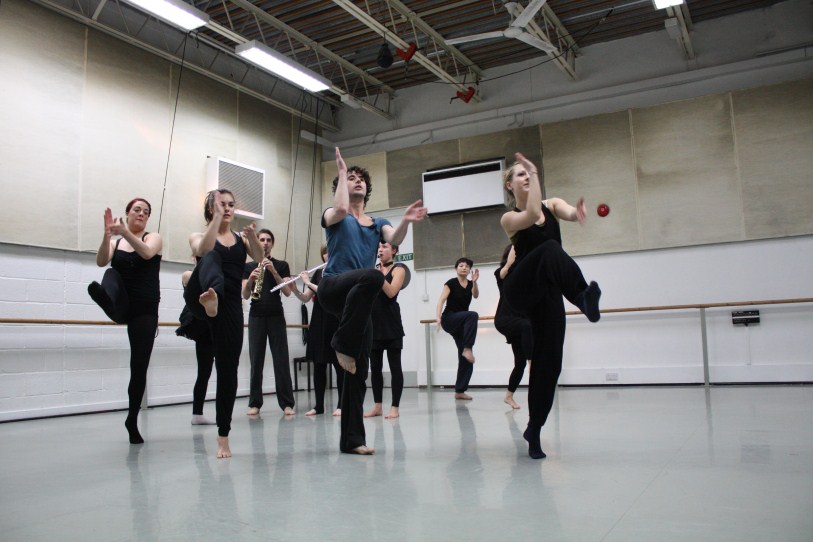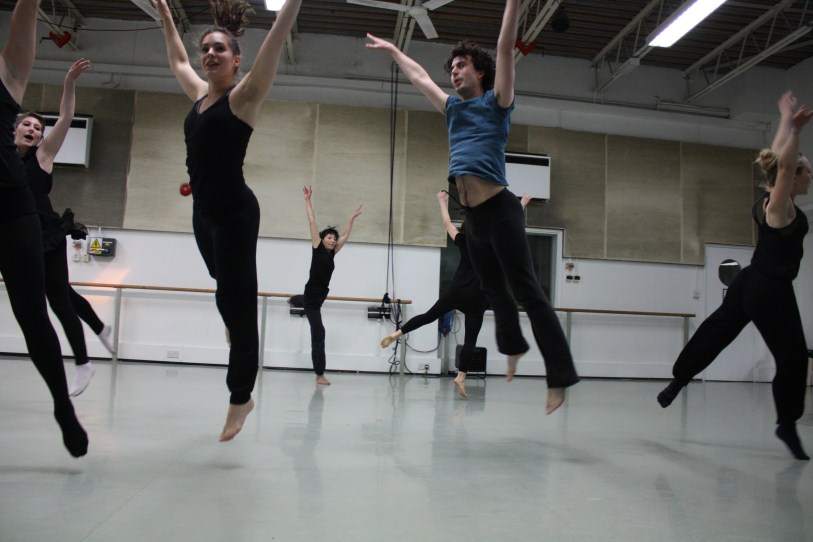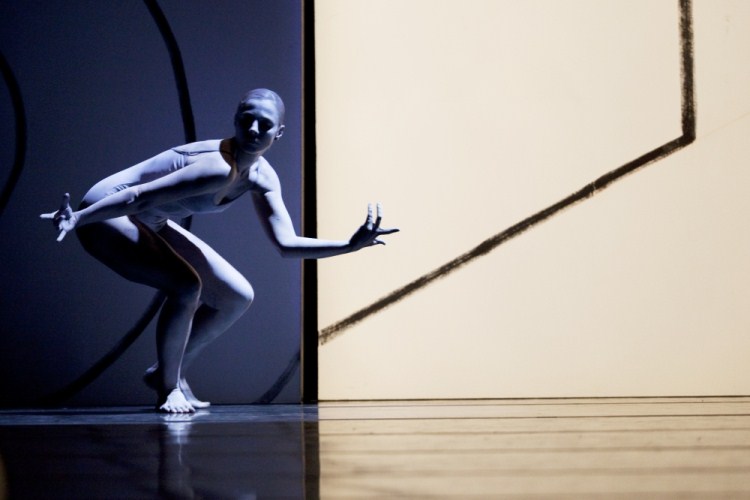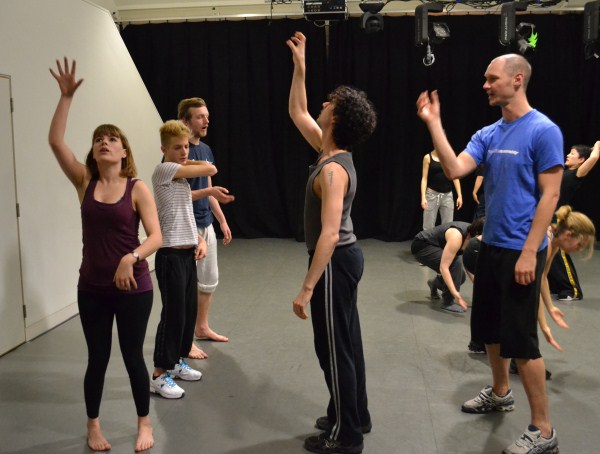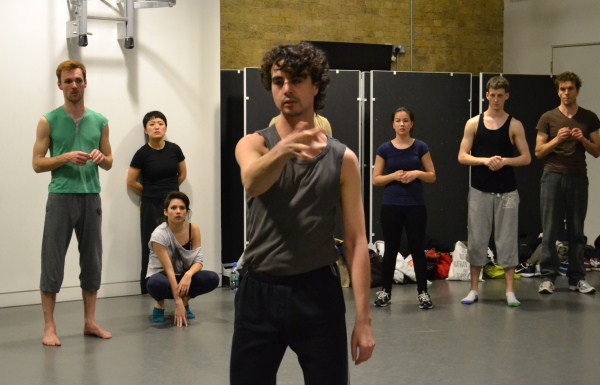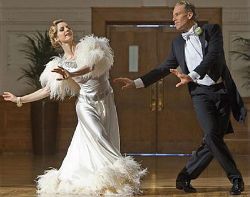- Details
-
Category: Blogs
-
Published: Friday, 11 May 2012 13:06
-
Written by Anna Pearce
‘Breathe in through your nose and out through your mouth’, ‘Breathe in through your nose and out through your nose’, ‘Send the heels down into the floor to lift the hips’, ‘Make sure you don’t push the heels into the floor to lift the hips’, ‘Arch the lower back’, ‘Keep the lower back in neutral’ 'There's no point in doing yoga, you're flexible enough' 'You don't need to be flexible to do yoga'……
These are just a sample of the various pieces of advice and instruction I’ve been given in recent classes. Over the last few weeks I have attended Pilates classes in both matwork and reformer, hot yoga and partner yoga classes and explored Girotonics. You’d be forgiven for thinking that I am now tied up in knots, not knowing which way is up. Well not quite, but it has had me thinking.
I do these classes to support my dance technique, and because I’m fascinated by the effects they can have on the dancing body, and bodies in general. The physical benefits are of course evident, improving strength, balance, muscle tone and flexibility. But I think above all the awareness of one’s own physicality that these various practices brings about is hugely valuable, for anyone, not just dancers. I know that I feel much more tired after a day in front of the laptop than I do after a day's moving; we must be kind to our bodies even when they're not performing split leaps or spring ball changes (insert favourite move here!).
My experiences of Pilates, yoga and Girotonics have led me to question whether, while of course each extremely valuable in their own right, there becomes elements of contradiction between the various practices. I know there are moments in my yoga classes where things only make sense by applying something I’ve learnt in Pilates, and then there are moments when something makes no sense at all, perhaps because my body is used to doing things in a certain way.
I think this reflects something which dancers may well experience when taking a range of classes in a range of techniques and styles. One teacher’s desired way of moving is often completely opposed to another’s, we might take a Cunningham class one week and a release class the following week, each with different advice as to how best to use our bodies, and what to strive for.
Whilst dancers should of course be adaptable and versatile, I think there's an element for everyone of wanting to discover one’s own signature style, as opposed to simply being robots or puppets who instantly morph perfectly into the preferred movement style of the choreographer or teacher they're working with.
I guess it’s up to us as artists to discover for ourselves what our ideal is. To harvest the elements of the various practices and experiences and in turn develop our own individual practice. Joseph Pilates’ exploration into his method came as a result of health problems as a child, and then through his experience as a gymnast, boxer, diver and body-builder. Interestingly, he also worked with Rudolf Laban. Juliu Horvarth, after suffering an injury which ended his dance career, originally dubbed his practise (now known as Gyrokinesis) ‘Yoga for Dancers’. These methods have evolved over many years, and continue to do so, which is why things are constantly changing, new standards are being set, and new ideals for the moving body are being represented. This has to be what keeps things interesting.
Whilst having roots in dance, these practices are now benefiting people from all walks of life. And out of these practices come the fitness fads; the zumbas and the body sculpts. These are somehow more easily accessible and perhaps less intimidating than the spiritualism of yoga or the focus of Pilates. But either way, we all know that keeping our bodies moving, in whatever which way, will allow us to reap the rewards physically and, sometimes more importantly, mentally.
I will continue to explore these things, I will probably continue to be a bit confused (nay, curious), but I'll do this with a body that is, hopefully, aware and intuitive to what it needs and how to work efficiently, even on 'laptop days' when much less actual movement happens.
- Details
-
Category: Blogs
-
Published: Monday, 23 April 2012 12:00
-
Written by Lewis Wheeler
Multithumb found errors on this page:
There was a problem loading image http://www.cloud-dance-festival.org.uk/images/easyblog_images//62/thumb_img_7450.jpg
There was a problem loading image http://www.cloud-dance-festival.org.uk/images/easyblog_images//62/thumb_img_7450.jpg
There was a problem loading image http://www.cloud-dance-festival.org.uk/images/easyblog_images//62/thumb_img_7575.jpg
There was a problem loading image http://www.cloud-dance-festival.org.uk/images/easyblog_images//62/thumb_img_7575.jpg
There was a problem loading image http://www.cloud-dance-festival.org.uk/images/easyblog_images//62/thumb_img_7577.jpg
There was a problem loading image http://www.cloud-dance-festival.org.uk/images/easyblog_images//62/thumb_img_7577.jpg
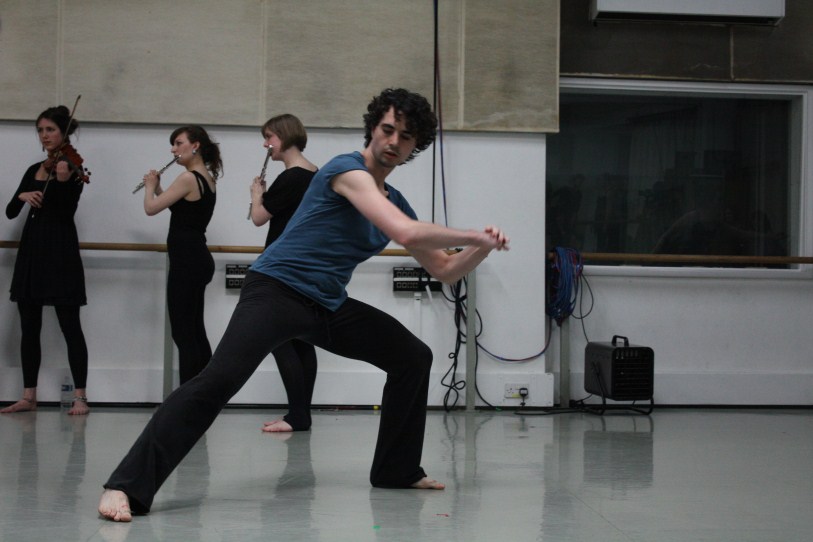
Why do music and dance work so well together? In a debate at Birkbeck about what ‘dance’ is, one of my fellow students argued that all dance is a response to music, that music is intrinsic to dance. I completely disagree with this idea on many levels and not least of all because of the implications this would have on deaf people’s engagement with dance. You can get all John Cage on me and argue that all sound or lack thereof can be perceived of as ‘music’ but you can listen to music without seeing or knowing the source and you can experience dance without hearing its intended (or unintended) aural accompaniment. Having said that, there is something almost magical in how well the two work together. A piece of choreography can be accompanied by and even dependent upon the visual design running through its costume, props, set and staging. The choice of venue and use of the space will fundamentally affect how the audience reads the work. The dancers themselves, their shapes, physical facilities, genders, ages, nationalities and even facial bone structures will all have a bearing on the audience’s interpretation of what they are seeing but nothing, it seems, will make a stronger impression on the audience than the relationship between the music and the dance.
Given the vitality of the relationship between the two art forms I don’t think enough attention is paid to developing dance students' relationships with music; instead it seems that musicality is to be developed by a process of osmosis. I know I’m an unusual person in that I haven’t spent a lot of time listening to music through my life: I’m a very ‘wordy’ person and although I generally abhor silence, it's BBC Radio 4 I choose to fill the void with rather than music. Part of the reason for this is, and other people who have the same relationship with music as me feel the same, is that I ‘can’t hear myself think’ when music is playing. I can’t tune out on music the same way as I can with the spoken word but nor do I find it easy to just sit, listen and concentrate on it. Unfortunately this has left me rather woefully lacking in the knowledge of music department and every time I need to source music for either dance or drama it can be quite an arduous process if I’m looking to use music outside of my very camp commercial pop and musical theatre musical taste!
I have been lucky to have danced to live music a lot though. At Birkbeck, all technique classes are accompanied by live music, generally piano for ballet and an eclectic variety of modern, world and percussive instruments for contemporary. My favourite so far has been the electric cello in conjunction with one of those ‘looping’ pedals (apologies, music jargon is not my strong point). The sound from the cello seemed to fill the room as it built in layers and it felt as though the sound became tangible in the space to dance within - amazing. Dancing with live accompaniment has so many advantages: the tempo can be adjusted, unconventional rhythms can be explored, phrasing and rhythm can be emphasised so that dancers can attune to the music and, most importantly, the human elements of music-making can be appreciated and a relationship between dancer and musician can be forged.
Of course live music is expensive (although musicians will probably disagree with that) and therefore recorded music is unfortunately the norm, particularly for novice choreographers like me. Therefore when I saw that Rambert Dance Company were offering a weekend workshop of collaboration between dance students and alumni of the London Sinfonietta Orchestra academy, I leapt at the chance. The idea of the weekend was to take Rambert’s version of Nijinksy’s L’Après-midi d’un faune and Mark Baldwin’s recent reimagining of it entitled What Wild Ecstasy as a starting point for music composition and choreography created via collaborative processes. As if that wasn’t great enough, the 2 day workshop only cost £40. Jealous? This is why it pays to be on every mailing list going!
The workshop seemed especially exciting for me as it would provide both an opportunity to work on choreography but also there would be the opportunity to network with the musicians which hopefully will prove useful in the future when I will be looking for new music!
The actual workshop itself packed a lot in. We began each day with a joint physical warm-up session then we separated so that as dancers we had a release-based technique class and the musicians would go to another studio and work on a group composition. On both days, we then joined together again so that the end of our technique class was danced to music that they had created, and this culminated in a whole group improvisation where the musicians were working together on a complex improvisational score and the dancers were using the sequence we’d learnt and then playing around with it as the basis for a dance improvisation. Although mostly improvised because of the common language of the phrase the dancers were playing with and the rules that the musicians had set themselves, the exercise did pull the whole group together and create an interesting visual and aural spectacle.
On both days, we watched Nijinksy’s L’Après-Midi d’un faune and we were tasked with drawing various thematic ideas from the piece as inspiration for our own work. In the groups I was in, we drew upon the ideas of ritual, power and bacchanalian celebration which all lend themselves easily as starting points for choreographic ideas. Deborah Galloway (dance animateur) and Mark Bowden (music fellow) from Rambert explained to us that most ‘collaboration’ between musicians and dancers actually happens separately with ideas being discussed and then each party going away and working on their material and then meeting together again and continuing their process in that way. However, during this workshop, they wanted to experiment with what happened with various groupings of dancers and musicians and working together, improvising together and also taking time apart in our groups if we needed it. Early on we worked in small groups of 2 or 3. Personally I found this most productive as our roles were obviously clearly defined and the short solo I created around ritual with Alice, a flautist, was selected for the end of workshop ‘sharing’.
We spent most of our devising time working on different ways to improvise with each other. We started with the music leading and me following the music, sometimes dancing with it and sometimes contrary to it, then we tried the same process but with Alice following my movement. It felt great when I would move my body and suddenly the sound would be echoing my movements. We decided that we wanted to create more of a conversation between the sound and the dance so we would incorporate elements of the music leading, the dance leading and also doing different things to each other and we would trust our instincts through the improvisation rather than set up a precise structure to follow. I think this worked well because it stopped any predictable patterns becoming evident to the audience, and it also meant that we could inject vigour and energy into each other’s work when we felt like the piece needed boosting.
The main task which we worked on over the workshop was in 3 larger groups. The group I was in had lots of dancers and only 3 musicians; another group had more musicians than dancers and another group had 2 of each. This was largely an experiment to see how the various groupings would affect the process. In our group, communication between the dancers and the musicians worked very well but amongst the dancers, particularly on the first day, it was certainly a case of too many chiefs. Everybody wanted to contribute and work hard, which was great, but as soon as an idea was suggested, instead of spending some time committing to it and trying it out, another idea was suggested and another and another… We got most of our work done when we split ourselves into small groups within the big group to choreograph material and then we came together to piece it together. However, after feedback on the first day, we seemed to have a more unified vision of what we were trying to create and we also switched from a largely choreographic mode to a rehearsal mode which brought us together and helped make our piece look more polished.
There were some elements of the piece I quite liked but naturally in a situation where you are collaborating with so many people, not everything was how I personally would have liked it to be. I know this element frustrated other people on the workshop and also some of the musicians would have liked to have worked less on improvisation and more on solid composition. I had entered the workshop with the intention of experiencing the process of collaboration, and in that sense, learning the things that don’t work for you is just as important as finding what does work. I had a great time doing this workshop and have kept in touch with some of the people involved.
Next month I’ll be in a dance photoshoot by one of the musicians (who is also a photographer) and we will also hopefully be working together on dance / music projects in the future! Watch this space.
All photos by Farrah Riley Gray for Rambert Dance Company
